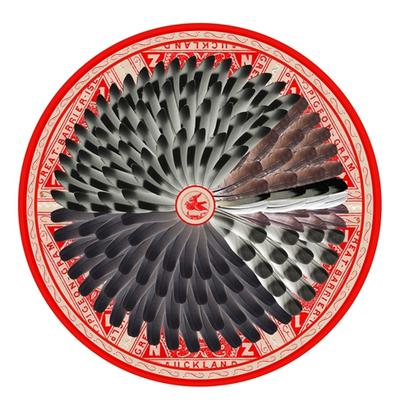The End of the Line
By
Lucy Stevens
2011
Lucy Stevens
An audio-visual installation developed from a series of experimental studio works inspired by the pigeon post into Paris.
The End of the Line explores the end of the carrier pigeons' journey and the end of the pigeon postal service. It is the 4th development of installations, including Dropping station 1, Dropping station 2 and M and X soundscape (see below for further information). All installations have been inspired by the pigeon post into Paris and have been created at CAMAC as part of the residency programme.
After the Franco-Prussian War and the introduction of wireless communication, pigeons were no longer employed to deliver messages. The pigeons that survived were official property and were sold at the Depot du Mobilier de l'Etat.
The visual references in The End of the Line were marked out from the previous installation (Dropping station 2) and are a response to the journey (usually between Paris, Tours and Poitiers) by carrier pigeons to deliver messages. To reduce the flight distance, the pigeons were taken by train as far towards Paris as was safe from Prussian intervention and were regularly taken out of Paris by hot air balloon.
The confetti on the floor traces the lines of an open-back book case (used for Dropping station 2) and marks out 16 squares using confetti, to celebrate those pigeons that received a commemorative medal for successfully delivering messages in record time.
The 11ft Ping Pong race painting shows 19 lines representing those pigeons that never reached their destination and therefore failed to deliver their messages. The colours represent each month, (October= red, November= orange, December= yellow and January= blue).
The soundscape uses sound recordings generated from previous installations (Dropping station 1 and Dropping station 2), which include balloons being inflated, deflated, squeezed, popped and dunked into water. The sound of a pigeon auctioneer can be heard from a Youtube clip. Recordings from Marnay-sur-Seine, including the sounds of pigeons and the church bell were used to represent the sound of the loft bell, which also announced the arrival of a carrier pigeon. The soundscape was split into two, so that two speakers placed on opposite sides of the room could take it in turns to play. This set up worked particularly well when the recording of the pigeon auctioneer was used.
Lucy Stevens
Lucy Stevens
Helping Artists Keep Going
Axis is an artist-led charity supporting contemporary visual artists with resources, connection, and visibility.






